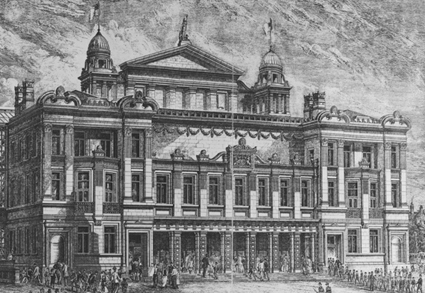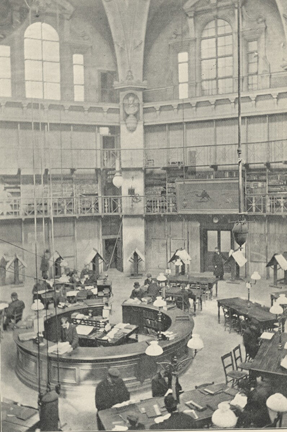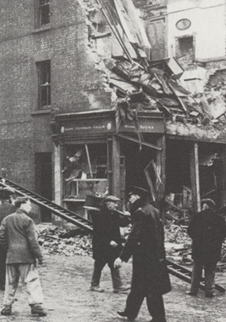| Four Colleges | |||||
| Women at Queen Mary Online: a virtual exhibition | |||||
 |
|||||
| In this section: | Queen Mary College | ||||||
|
> The London Hospital Medical College > St Bartholomew's Hospital Medical College > Today's Queen Mary, University of London
|
|||||||
|
Queen Mary College began its history as the People's Palace for East London, and its Technical Schools, which was opened by Queen Victoria at a grand ceremony and much local celebration in 1887.
The People's Palace was a philanthropic endeavour to provide east Londoners with education and social activities. It evolved from the legacy of the Bancroft Hospital and Almshouses (administered by the Drapers Company and Beaumont Trust), and also resulted from the growing awareness of the poor social and economic conditions in East London, which Walter Besant described in 1882 in All sorts of conditions of men. That book set the scene for a 'palace of delights' in the East End to bring its 'teaming hoards' culture and practical education. A scheme developed to create an institution that would provide the people of the East End with educational advantages, evening classes, a library, reading rooms and recreational activities. The People's Palace for East London was thereby founded.
The People's Palace held a range of leisure activities and involved a number of societies. It attracted members of the local community, including women from both the middle and working classes. It was 'a place where people of all classes and conditions [could] congregate' and 'its Library, its Music, its Pictures, its Lectures, its Literature Classes, and its Technical Schools [would] offer to all the means of thought and knowledge which feed aspiration'. It therefore became a centre for local leisure, entertainment and education for the working classes of East London.
The library was located in The Octagon, within the People's Palace, and was much used by the local community. Minnie Stewart Rhodes James, a librarian, worked to provide the local community with suitable books and opening hours. In 1896, the People's Palace Technical Schools became East London Technical College, and evening classes prepared students for the University of London examinations and for entry into the Civil service. Additional classes in trade general and commercial subjects were held. In 1902, first degrees of the University of London were awarded. In 1905, East London Technical College name changed to East London College with the key aim to promote higher educated in East London. In 1915, East London College formally became as a School of the University of London in the Faculties of Arts, Science and Engineering. Two years later, in 1917, the College accepted a proposal to admit students from The London Hospital Medical College who were preparing for the Preliminary medical examination. The leisure activities of the People's Palace continued throughout years of the College's evolution. The Queen's Hall of the People's Palace burnt down in 1931. After this time the Palace agreed to move from its base, in what is now the Queen's Building, to a new People's Palace building, which was opened in 1934 and still stands on the campus today. At the same time the rooms of the old People's Palace were taken over by the College, which in 1934 was renamed and incorporated as Queen Mary College. Queen Mary attended a ceremony when the College was renamed. Today the People's Palace houses the Skeel Lecture Theatre and the Great Hall, where concerts and College ceremonies, including graduation, take place.
In 1939, the College evacuated to Cambridge during the Second World War. The College buildings were used by Stepney Council during the war. Teaching carried on as usual using shared facilities in Cambridge. Learn more about QMC in Cambridge here. [Insert link when page is created] To learn more about Queen Mary College, these two books, held in the College Archives, provide insight into the development and history of the College:
The College Archives hold an extensive collection of material relating to Queen Mary College, its founding as the People's Palace, its history, and members of the staff and students, from its opening in 1887 to its merger with Westfield College in 1989. |
| << previous | Explore Four Colleges |
|



